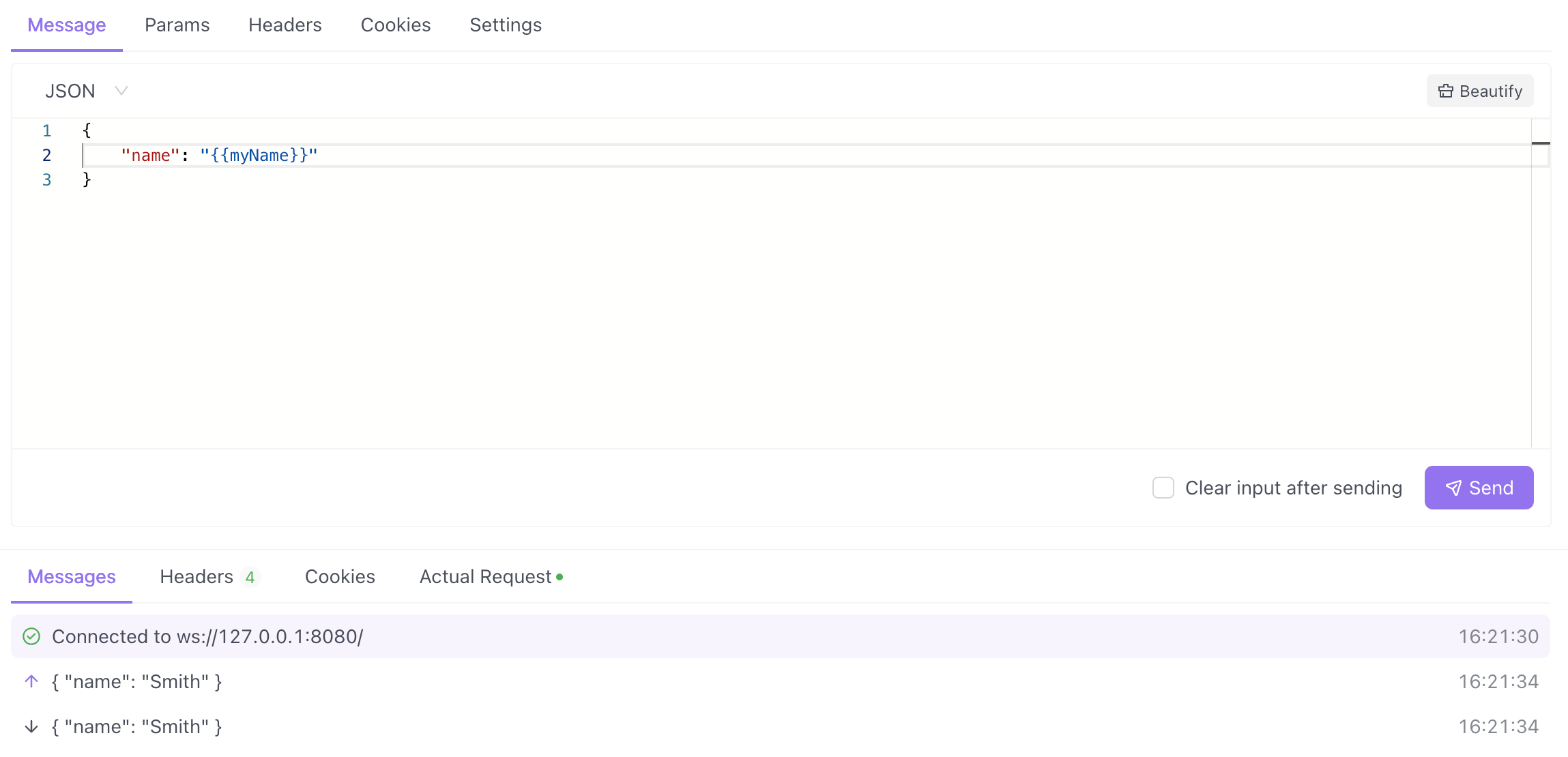WebSocket is an API technology that enables full-duplex communication over a single TCP connection. Compared to traditional HTTP requests, WebSocket offers lower latency and higher efficiency. It is well-suited for scenarios requiring persistent connections and real-time data transmission, such as online gaming, real-time chat, and more.WebSocket API management is supported in Apidog version 2.2.34 and later.
Creating a WebSocket endpoint#
You can create a WebSocket endpoint within an HTTP project.1.
Click the + button on the left and select New WebSocket.
2.
Enter the WebSocket server URL, beginning with ws or wss.
4.
To disconnect the WebSocket endpoint, click Disconnect.
For the best experience and to utilize the full feature set of the WebSocket API, we recommend using the Apidog client.
Sending Messages#
After establishing a WebSocket connection, you can compose messages under the Message tab.In addition to directly composing messages in text formats such as Text, JSON, XML, and HTML, you can also compose messages in binary formats using Base64 or Hexadecimal.The editor will apply syntax highlighting to the message content based on the selected message format. If the message is in JSON, XML, or HTML format, you can also format the input content.Viewing Messages#
The Messages section below displays the connection status, sent messages, and received messages in chronological order.Click a single message to view its details on the right:For text format messages, the formatted message will be displayed by default. You can manually switch the message format and encoding.
For binary format messages, the message's Hexdump will be displayed by default. You can also view the message encoded with Base64 and the original message.
Adding Handshake Request Parameters#
You can customize the parameters required during the WebSocket handshake, such as Params,Headers, and Cookies, to accommodate authentication or other complex scenarios.Handshake request parameters cannot be modified once the connection is established. They must be configured before establishing the connection or after disconnecting.
Using Variables#
You can use Apidog variables in the WebSocket connection's handshake and messages. Learn more about Using variables.API Documentation#
You can set the status, responsible person, and tags for the WebSocket API, and provide a detailed API description in Markdown format.You can also share the WebSocket API documentation with external teams, who can view it directly in their browser.Saving the API#
After debugging is complete, click the Save button to save the WebSocket API to the directory tree of the HTTP project. This allows other team members to debug or view the API documentation.FAQ#
Q: Why is response validation not needed?A: For WebSocket requests, the HTTP status code must be 101 when establishing a connection, indicating a successful protocol upgrade. Therefore, validating the status code is typically not necessary.Q: There is no Auth tab. How can I authenticate the WebSocket API?A: Currently, two methods are recommended for WebSocket API authentication:1.
Pass the authentication information in a Param, Header, or Cookie field during the connection establishment.
2.
Include the authentication information in a field within a message.




